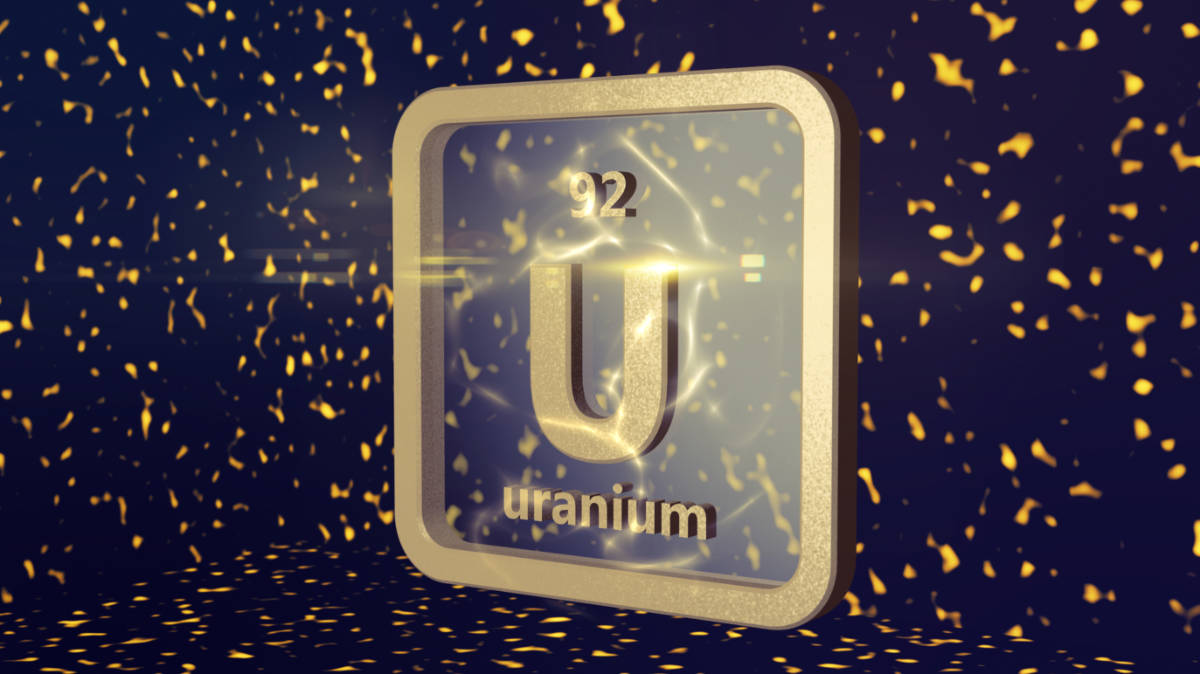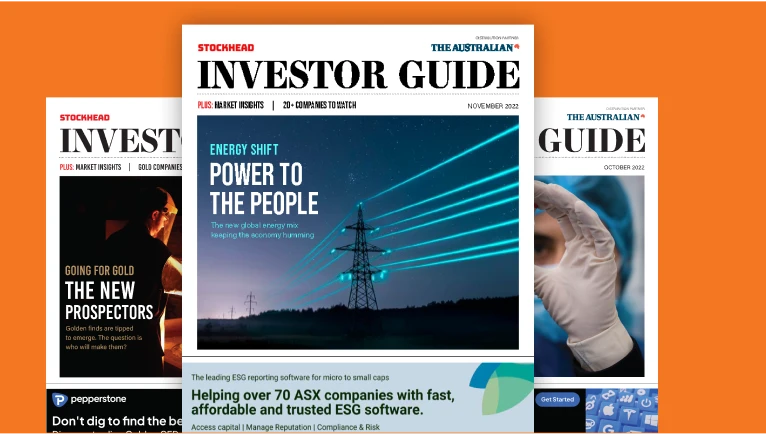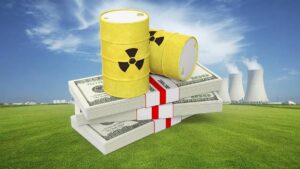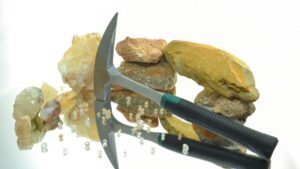These juniors could go nuclear if signs of recovery continue for uranium prices

The uranium market is showing signs of recovery. Pic: Getty Images
- The uranium market seems to be turning
- As tariff threats loom, contract prices continue to hold up their multi-year highs
- Could one of these seven bargain barrel picks be the next multi-bagger uranium stock?
Uranium spot prices have finally woken from their slumber, with prices climbing from a persistent 18-month low in the US$64/lb range to US$70/lb at the end of last week.
The recharge has been helped by a production disappointment from Kazatomprom, the world’s largest producer. Cameco’s Tim Gitzel said market uncertainty, especially around whether some uranium imports could eventually be placed on Trump’s tariff list, has also kept utilities out of the market.
But that means some 70% of demand for the next two decades remains uncontracted, a recipe for a price shock down the line.
Long-term contract prices, which offer a clearer view of the market’s underlying long-term dynamics, are also continuing to hold up multi-year highs at over US$80 per pound.
Unlike most commodities, uranium is not actively traded on major exchanges. Instead, the market is dominated by long-term, bilaterally negotiated contracts that meet the annual fuel needs of nuclear power plants, with only a limited spot market addressing short-term or discretionary demand.
Guy Le Page, a former geologist, experienced stockbroker and director at Perth-based financial services provider RM Corporate Finance says along with the positive contract price, there are four other reasons why the uranium market is set to bounce in the near term.
These include a declaration by 31 countries at COP28 to triple global nuclear capacity by 2030 and the fact that renewable energy is incapable of providing base-load power with zero carbon emissions.
“Nuclear is one of the cleanest fuel sources likely to take a leading role around the globe in the provision of base-load power as fossil fuels are phased out,” he said.
“[Another] reason that uranium is gaining ground, according to UxC Uranium Market Outlook [a quarterly report on the uranium market], is that utility activity remains robust, averaging over 90 per cent via term contracts in the past three years with contracted activity remaining below replacement levels.
“They also believe that global nuclear utilities have approximately 1 billion pounds of uncovered uranium requirements over the next decade, which indicates significant future demand in the market and could drive higher prices and create supply challenges.”
Le Page sees uranium contract prices surging above the US$80-85 mark to around $115 or $120 per pound in the next two years.
“I think that $120 mark is going to be the incentive price going forward to bring on new uranium production – there is about a billion pounds of uranium that is uncovered and required for utilities, which is a substantial amount and obviously the spot market is quite illiquid, relying on going to the spot market to top up their requirements is really not an option,” he said.
Another Guy following uranium closely – Tribeca’s Guy Keller – says nuclear generation capacity is now being pushed “extraordinarily hard” by global tech companies that are cashed up and spending billions rolling out technologies that require base-load electricity.
He believes there will be a crunch point where tech companies will question utilities about whether they have the uranium to support nuclear electricity for the next 20 years.
The World Nuclear Association (WNA) projects a significant increase in global uranium demand over the coming decades, primarily driven by the growing nuclear power sector and increased global electricity demand.
The WNA’s Nuclear Fuel Report estimates that uranium requirements will increase by 28% between 2023 and 2030 and by 51% between 2031 and 2040, based on a reference scenario.
This growth is influenced by both the expansion of existing nuclear power plants and the construction of new ones.
Could one of these bargain barrel picks be the next multi-bagger uranium stock?
Finding a diamond in the rough among microcaps is the dream scenario for any investor.
Because they can scale more quickly, small-cap companies tend to outperform their larger peers over time, especially for those with the patience and risk tolerance to hold through the ups and downs.
We’ve collated a list of seven sub-$30m market cap stocks with exposure to this exciting uranium thematic.
GTI Energy (ASX:GTR)
Market cap: $9m
GTR holds the Lo Herma ISR uranium project in Wyoming, where it recently completed conceptual design and cost estimation work completed for wellfield installation and processing plant construction.
This latest body of work follows positive results from hydrological and metallurgical studies and completes the key input studies for the scoping study, which remains on track to be delivered during Q2 2025.
GTR executive chairman and CEO Bruce Lane told Stockhead the company’s core activity for 2025 so far has been progressing the scoping study for the Lo Herma project so that it can illustrate the baseline economics of the asset.
“We’ve gotten through all of the fieldwork, we’ve done the key economic studies for the processing plant, the construction phase and the well field – really now is just knocking the report into shape and I say, illustrating the baseline economics for the project,” he said.
Project resources currently stand at 6.21Mt at 630ppm eU3O8, or 8.57Mlb contained U3O8, with 32% or 2.78Mlb in the indicated category, which compares favourably against Ur-Energy’s nearby 8.8Mlb Shirley Basin ISR build, and Encore Energy’s 8.1Mlb Gas Hills ISR project.
An amendment to GTI’s current Drilling Notification Permit is being prepared, focused on further exploration of defined exploration targets to expand resources further.
The company has also completed four monitor wells, all of which have demonstrated sufficient submergence of Lo Herma mineralisation within the local groundwater system to support ISR mining.
Core Energy Minerals (ASX:CR3)
Market cap: $4.67m
CR3 expects to mobilise drilling rigs to the Cummins uranium project in the second quarter of 2025, with permitting underway to enable a maiden campaign targeting “roll front” style mineralisation.
Historical drilling data – validated by French state-owned uranium exploration company Areva in 2009 – points to several broad, shallow zones of radioactive mineral concentrations over an area of more than 10km.
CR3 has since interpreted several areas to host roll front mineralisation prospective for uranium, representing high-priority areas for the maiden drilling campaign.
The company also owns the Brooker project, which sits directly to the northeast of Cummins along the western margin of the Port Lincoln Uplands in an area with several uraniferous granite source rocks and uranium occurrences.
CR3 is led by Latin Resources alumni including executive director Anthony Greenaway and chairman Chris Gale, who were key figures in the growth of the Brazilian lithium upstart which captured a major win for investors with its $560m sale in January to Pilbara Minerals (ASX:PLS).
Terra Uranium (ASX:T92)
Market cap: $3.16m
T92, which listed on the bourse in 2023, is backed by uranium veterans Andrew Vigar, the co-founder of several public listed companies including $125m market cap uranium company Alligator Energy (ASX:AGE), and ex-head of operations at Cameco Mike McClelland.
The company owns an impressive nine projects covering 181,779ha in the highly prospective Athabasca Basin Region, Canada.
A further 12 mineral claims totalling 60,965ha in the Spire & Horizon Projects are under option from ATHA Energy Corp – widely recognised as one of the largest uranium exploration companies in North America.
T92 commenced operations on the shallower uranium targets at the Spire & Horizon Projects with ground reconnaissance and airborne geophysics. Several targets for follow-up work have been identified.
A coordinated program across all projects has been prepared. Permits are in place for an efficient and focused drill program in 2025 across multiple drill-ready targets. The company continues negotiations with other groups to fund drill programs.
Greenvale Energy (ASX:GRV)
Market cap: $27.27m
With a $1.8m cap raise now complete, Greenvale Energy is gearing up to explore its newly acquired Oasis project in Queensland, which bares similarities to the monstrous Rossing uranium mine in Namibia. Greenvale is anticipating drilling at Oasis as soon as next month.
The funds will also support the next phase of exploration across Greenvale’s uranium prospects in the NT’s Pine Creek mineral field, starting with radiometric surveys and aircore drilling.
GRV added five uranium projects to its portfolio earlier this year to join its existing Alpha torbanite project, also in Queensland.
It strongly believes Australia could end up being home to half of the world’s uranium resources.
“Remarkably, Australia has more uranium than any other country in the world. We have 28% of the world’s uranium reserves, and that’s without a sustained exploration effort by the juniors,” Greenvale’s Neil Biddle, a key figure in the early days of Pilbara Minerals, said.
“If the juniors got stuck into exploring for uranium, it wouldn’t surprise me if Australia ended up with half the uranium reserves in the world. That makes Australia a key player in the nuclear industry going forward.”
Recharge Metals (ASX:REC)
Market cap: $3.60m
Over in Montana, close to the Wyoming border, Recharge holds the Carter uranium project, which sits within 250km of six permitted ISR uranium production facilities.
The project was intensely explored by numerous major mining and energy companies during the late 1970s and early 1980s with exploration focused on the northern rim (extension) of the Powder River Basin from Wyoming into Montana.
Carter contains two significant high-grade historical resources at the Acadia deposit, where 3.7 Mlbs at 1,250ppm U3O8 has been estimated, and the Mindy deposit, where 1.4 Mlbs at 1,560ppm U3O8 is recorded.
The project covers a highly prospective land package along a regional roll-front uranium trend extending about 11km.
REC has purchased a large exploration database and is currently compiling and reviewing the wealth of information that contains and recently met with local ranch owners to ensure a collaborative approach to land access.
The permitting process has kicked off with an experienced consulting group to ensure compliance with environmental and land use requirements, laying the groundwork for upcoming drilling.
Data compilation, geological review, and target generation are now in the final stages of planning, with drilling to focus on high-priority targets identified from historical data and recent evaluations.
Koba Resources (ASX:KOB)
Market cap: $6.34m
KOB has notched up three new high-grade uranium finds at its Yarramba project in the past 12 months, right next to producing operations in South Australia.
The latest find, the Everest prospect, is immediately north of Boss Energy’s (ASX:BOE) 10.7Mlb Jasons Deposit and the Honeymoon uranium mine.
That addition takes the count to three high-grade discoveries for KOB, all grading above 1,000ppm, joining Berber (1.6m at 1,026ppm) and Chivas (0.5m at 1,028ppm).
With heritage approvals now in hand, the company is set to begin infill and extensional drilling in the second quarter.
Moab Minerals (ASX:MOM)
Market cap: $2.60m
MOM’s uranium portfolio spans Tanzania, Colorado and southern Nevada with the Manyoni and Octavo assets in Africa and the REX project in the US.
Last year’s acquisition of the Manyoni and Octavo projects marked a turning point for the company, with former owner Uranex having carried out significant exploration and drilling from the early 2000s to 2013 –leaving MOM with a rich dataset to build on.
Both sit within the central Tanzanian Archean Shield, with initial four-year terms that are extendable for additional periods.
Results from recent PQ core drilling at Area A of the Manyoni project have revealed consistent uranium mineralisation across the tenements.
The next step is to correlate these findings with historical assay data to underpin a JORC resource.
At Stockhead we tell it like it is. While GTI Energy, Core Energy Minerals, Koba Resources, Greenvale Energy and Recharge Metals are Stockhead advertisers, they did not sponsor this article.
Related Topics

UNLOCK INSIGHTS
Discover the untold stories of emerging ASX stocks.
Daily news and expert analysis, it's free to subscribe.
By proceeding, you confirm you understand that we handle personal information in accordance with our Privacy Policy.








